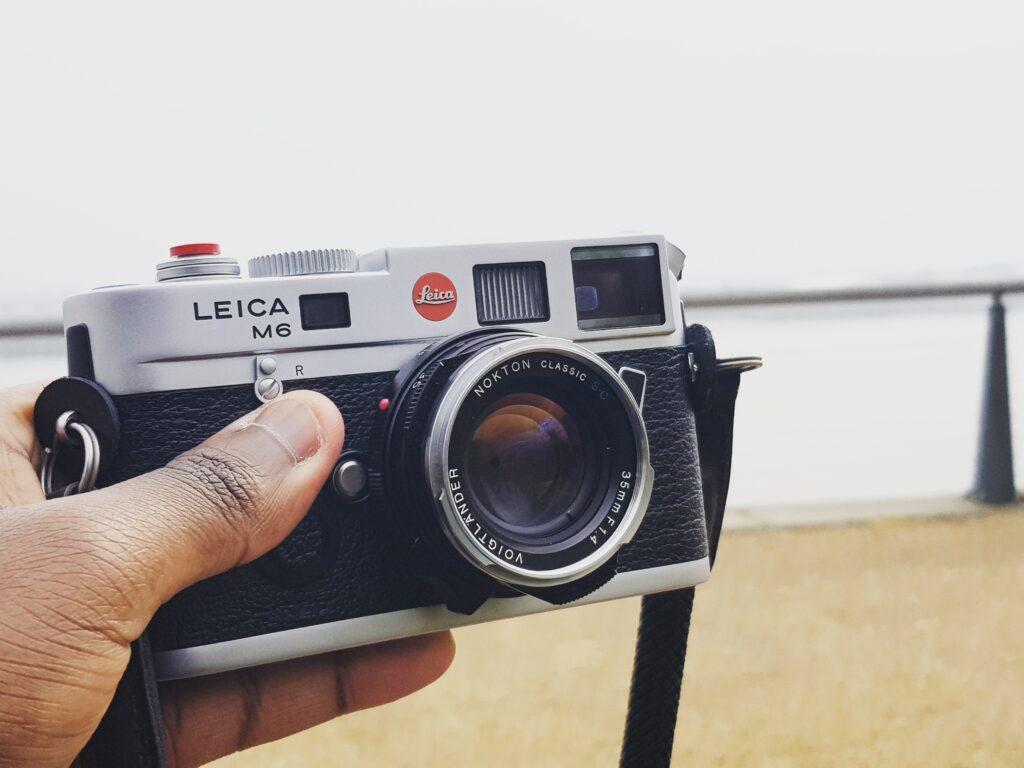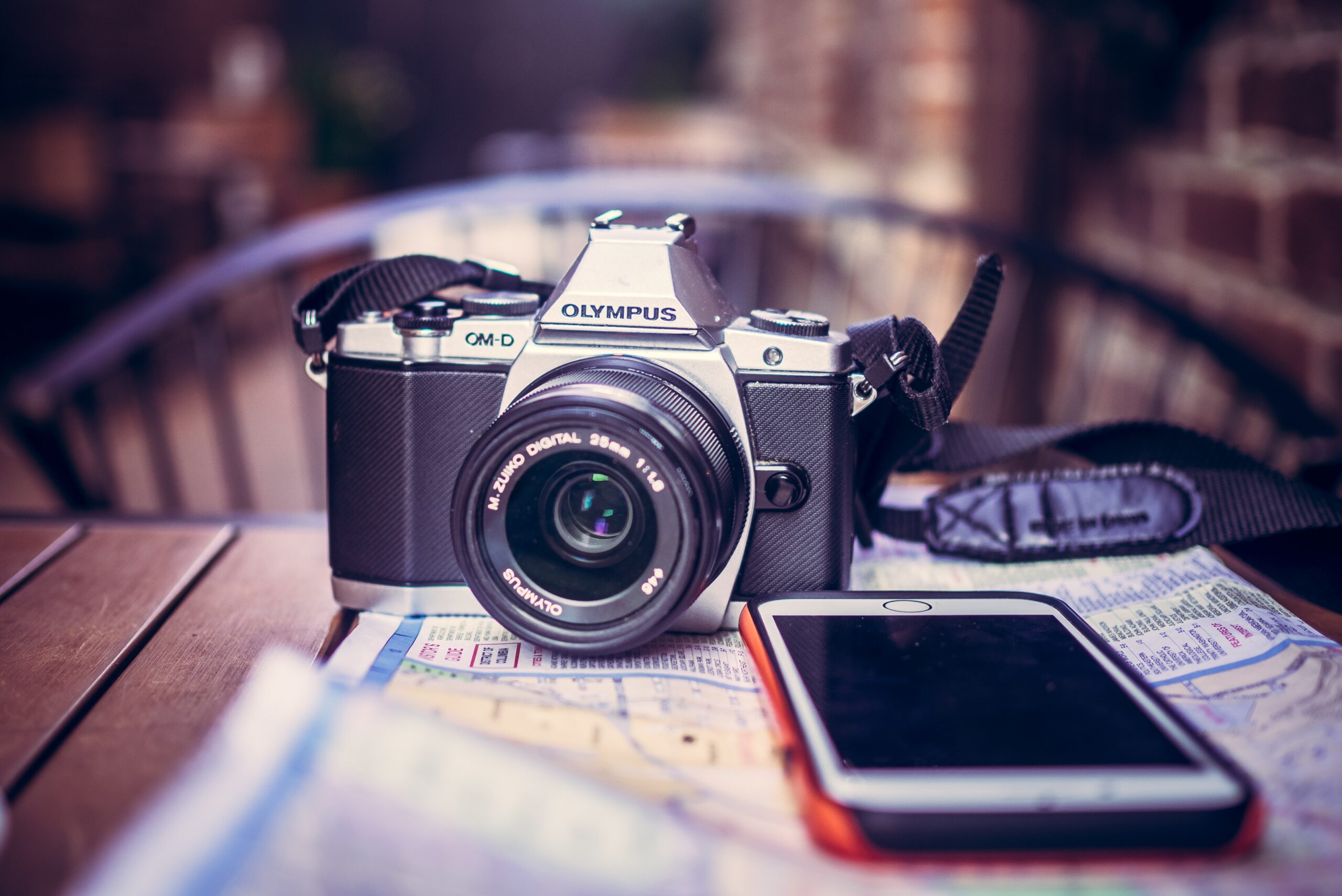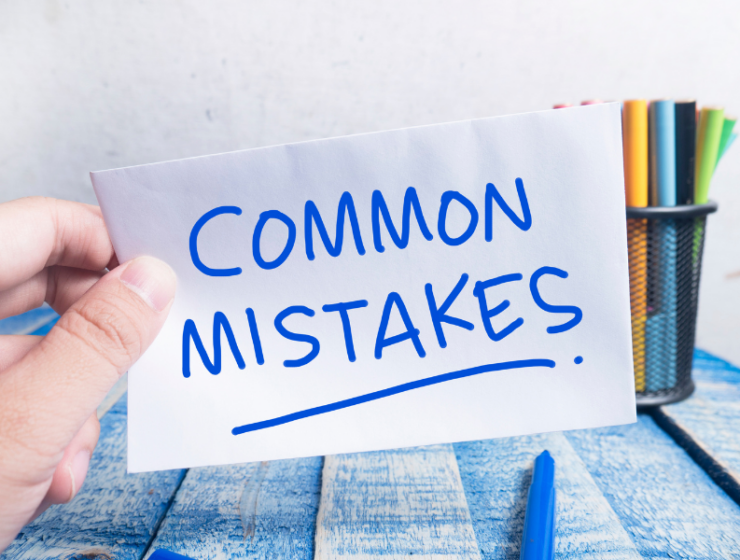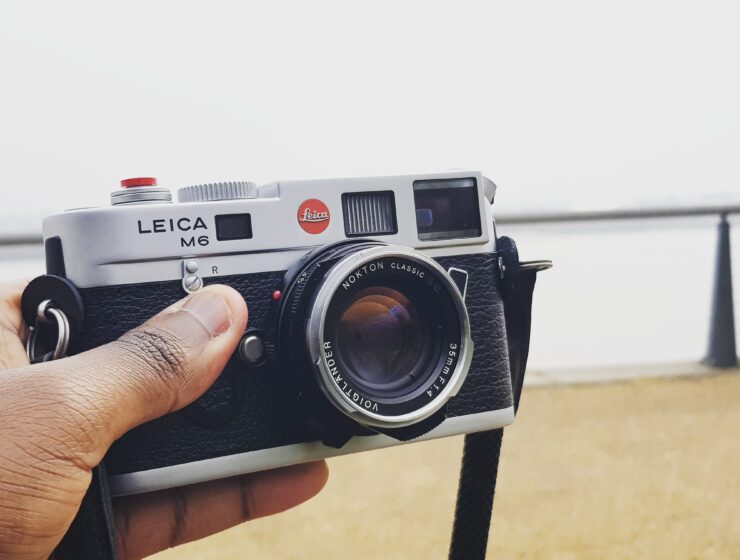In the constantly changing world of photography, there are three main contenders competing for the title of the ultimate tool: DSLR (“digital single-lens reflex”) cameras, traditional film cameras, and smartphones. Each option has its own advantages and disadvantages, which makes the decision of which to use for a photography contest difficult for many aspiring photographers. This post will explore some of the pros and cons of each option so that you can pick the right tools to capture the winning shot.
DSLR Cameras

Pros:
- Image Quality: DSLRs are known for producing high-quality images with excellent sharpness, dynamic range, and resolution. They allow you to interchange the lens, so you can get use different types of lenses that serve different purposes and achieve different results for each shot.
- Versatility and Control: DSLRs have full manual control over settings such as shutter speed, aperture, and ISO (which makes it effective for shooting in dim lighting). They also provide various shooting modes catered to different scenarios. With such versatility, you can be more creative and precise with your photographs.
- Autofocus Performance: DSLRs usually have accurate and fast autofocus systems, allowing you to quickly capture mor high-quality images. As a result, they are ideal for action shots and ensuring sharp focus in different conditions.
- Battery Life: They don’t require the digital screen to be on at all times, so DSLRs use little power.
- Storage: Memory cards are so small that they don’t require much storage space. One card can store more images than a dozen rolls of film.
- Viewing and Editing: You can view your photos immediately and can edit them directly on the camera or on a computer that has photo-editing software.
Cons:
- Size and Weight: Compared to other options, DSLRs may be bulkier and heavier—and thus less convenient to carry around.
- Learning Curve: While the many settings and controls DSLRs offer allow for more flexible photography, it may be overwhelming for beginners.
- Low Light and Black-and-White: Digital cameras may do a poorer job at focusing in low light and easily lose detail in black and white compared to film cameras.

Film Cameras
Pros:
- Technical Advantages: Film cameras offer a variety of creative and technical advantages, such as superior color saturation and accuracy, higher dynamic range, and ability to experiment with double exposure.
- Price: The initial cost to buy a film camera is generally lower than their digital counterparts.
- Learning the Basics: Using film forces photographers to be more intentional with each shot, encouraging a deeper understanding of the fundamentals of photography (i.e., lighting, exposure, composition).
- Black-and-Whites: If you decide to submit a black-and-white photo, film cameras may be right for you. When shot on film, black-and-white pictures tend to be more detailed due to the increased dynamic range.
Cons:
- Cost and Time: Shooting film involves expenses for buying film rolls, processing, and printing. You must be selective about the images you take so you don’t waste film. Additionally, processing and developing film is time consuming, so make sure you leave enough time in between taking your shots and the submission deadline.
- Limited Flexibility: Unlike digital cameras, film cameras don’t allow you to instantly review and adjust your shots. You can’t adjust the exposure of a dark image or crop out unwanted elements with photo editing software later on. As a result, you might be less able to capture rapidly changing or fast-paced scenes effectively.
Smartphones
Pros:

- Convenience: Most people carry their phone with them everywhere, which means you will always have a capable camera in your pocket! It makes them perfect for travel photography and spontaneous moments, where specialized equipment may not be available.
- Easy to Use: Smartphones are made to be user friendly (you might even be reading this on your phone!). The automatic settings and built-in editing options allow beginners to get decent results fast.
- Connectivity and Sharing: With smartphones, you can instantly share images through social media or messaging, which can help you gain exposure and feedback from a more extensive audience.
- Good in a Variety of Conditions: Smartphone cameras are designed to be useful in different scenarios, and specifically can take great close-up photos (easy tap to focus!), capture bright scenes with the sun behind you, and get that perfect selfie or portrait (dual cameras for self- and forward- facing pictures!).
Cons:
- Image Quality: Although smartphone cameras have improved over the years, they still are less capable of good image quality compared to DSLRs and film cameras, particularly in dim lighting.
- Zoom Capability: Due to physical space restrictions when building smartphones, they have limited optical zooms. Relying on digital zoom akin to cropping a photograph and making it bigger, zooming in on smartphone cameras seriously compromises image quality and ability to make prints.
- Lack of Control: Smartphones offer limited manual control over settings, which may be binding for photographers who want more creative freedom. Other than zooming and color filters, you generally cannot change the ISO settings, shutter speed, or aperture to better suit your environment.
- Low Lighting: Due to their size, smartphones have small sensors and narrow aperture (opening in the lens), limiting the amount of light that hits the sensor. As a result, smartphones generally take poor and grainy-looking photos in low lighting or at night.
Choosing the Right Tool for the Contest:
Ultimately, the best camera for a photography contest depends on your preferences and style. If you want to focus on image quality and creative control, a DSLR might be right for you. On the other hand, if you want more of a unique aesthetic and artistic challenge, film photography might be worth exploring. For those who prioritize spontaneous shooting, instantly sharing images, and convenience, smartphone cameras are unparalleled in connectivity and ease of use.
Remember, it’s not just about the tool you use, but HOW you use it. Understanding photography fundamentals, mastering composition, and developing a creative and artistic eye for capturing compelling moments are crucial to create an award-winning photograph.
Before submitting your photo to a contest, make sure you practice with your chosen camera to familiarize yourself with the capabilities and limitations. Explore different subjects, lighting conditions, and techniques to develop your skills as a photographer.
No matter which tool you choose, your success in photography contests will reflect the dedication and passion you put into it. We wish you good luck in all of your photography endeavors!
To learn more about the different types of cameras, see below!
What Are Different Types of Film Cameras




